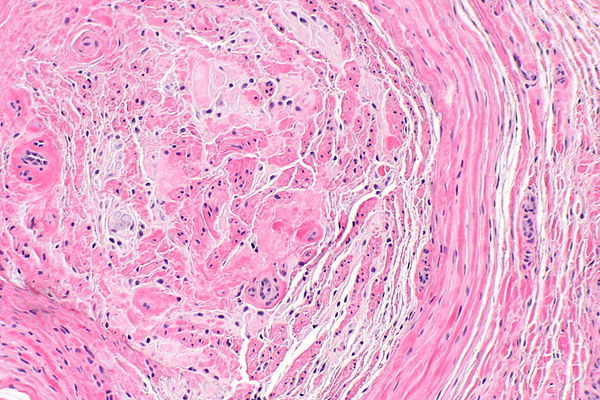Morton’s Neuroma, often referred to as MN, is a painful condition that affects the foot, particularly the area between the toes. This condition occurs when the tissue surrounding a nerve in the foot thickens, leading to discomfort and pain. While it may not be life-threatening, it can significantly impact daily activities and quality of life. In this article, we will explore the causes, symptoms, and available treatments for this common foot ailment.

Understanding Morton’s Neuroma
Morton’s Neuroma primarily affects the ball of the foot, most commonly between the third and fourth toes. The condition arises due to irritation or compression of the nerve that runs between these toes. Over time, this irritation leads to the development of a benign growth around the nerve, which is what causes the characteristic pain associated with this condition.
How Does It Develop?
The exact cause of Morton’s Neuroma is not always clear, but several factors contribute to its development:
- Foot Structure: People with certain foot shapes, such as high arches or flat feet, are more prone to developing this condition. These structural abnormalities can place undue pressure on the nerves in the foot.
- Tight Footwear: Wearing shoes that are too narrow or have high heels can compress the toes and irritate the nerves. This is why Morton’s Neuroma is more common in women than in men.
- Repetitive Stress: Activities that involve repeated stress on the feet, such as running or dancing, can increase the risk of developing this condition.
- Injury: A previous injury to the foot, even if minor, can lead to inflammation and irritation of the nerves over time.
Symptoms of Morton’s Neuroma
The symptoms of Morton’s Neuroma can vary from person to person, but they generally include:
- A sharp, burning pain in the ball of the foot.
- A tingling or numb sensation in the toes.
- A feeling as if there is a small stone or pebble in the shoe.
- Pain that worsens with activity or when wearing tight shoes.
- Relief from pain when removing shoes or massaging the foot.
These symptoms often develop gradually and may initially be mild. However, without proper treatment, the pain can become severe and persistent, making it difficult to walk or stand for extended periods.
When to See a Doctor
If you experience persistent foot pain that interferes with your daily activities, it is important to consult a healthcare professional. Early diagnosis and treatment can prevent the condition from worsening and improve your chances of recovery.
Diagnosing Morton’s Neuroma
To diagnose this condition, a doctor will typically perform a physical examination of the foot. During the examination, they may press on the foot to identify areas of tenderness or feel for a lump or swelling between the toes. In some cases, additional tests may be required to confirm the diagnosis:
- X-rays: These are used to rule out other conditions, such as fractures or arthritis, that may cause similar symptoms.
- Ultrasound: This imaging technique can help visualize the thickened nerve and confirm the presence of Morton’s Neuroma.
- Magnetic Resonance Imaging (MRI): An MRI provides detailed images of the soft tissues in the foot and is particularly useful for diagnosing complex cases.
Treatment Options for Morton’s Neuroma
The treatment for Morton’s Neuroma depends on the severity of the condition and the individual’s response to initial therapies. In many cases, conservative treatments are effective in relieving symptoms. However, if these measures fail, more invasive options may be necessary.
Non-Surgical Treatments
Most people with Morton’s Neuroma respond well to non-surgical treatments. These approaches focus on reducing pressure on the affected nerve and alleviating pain. Some common non-surgical treatments include:
- Footwear Modifications: Switching to shoes with a wide toe box and low heels can reduce pressure on the nerve and provide relief. Custom orthotic devices may also be recommended to correct foot alignment and support the arch.
- Padding and Taping: Applying padding or taping the foot can help redistribute pressure and protect the nerve from further irritation.
- Medications: Over-the-counter pain relievers, such as ibuprofen or acetaminophen, can help manage pain and inflammation. In some cases, corticosteroid injections may be administered to reduce swelling around the nerve.
- Physical Therapy: Stretching and strengthening exercises can improve foot function and reduce strain on the affected area.
- Ice Therapy: Applying ice packs to the foot can help reduce inflammation and numb the area, providing temporary relief from pain.
Surgical Treatments
If conservative treatments fail to provide relief after several months, surgery may be considered. Surgical options for Morton’s Neuroma include:
- Decompression Surgery: This procedure involves cutting nearby structures, such as ligaments, to relieve pressure on the nerve.
- Nerve Removal: In severe cases, the affected nerve may be surgically removed. While this eliminates the pain, it can result in permanent numbness in the area served by the nerve.
Surgery is typically reserved for individuals with persistent symptoms that significantly impact their quality of life. As with any surgical procedure, there are risks and potential complications, so it is important to discuss these thoroughly with a healthcare provider.
Lifestyle Changes to Prevent Morton’s Neuroma
Making certain lifestyle changes can help prevent the development or recurrence of Morton’s Neuroma. These changes focus on reducing stress on the feet and maintaining overall foot health:
- Choose Proper Footwear: Opt for shoes with a wide toe box, low heels, and good arch support. Avoid wearing high heels or shoes that squeeze the toes together.
- Maintain a Healthy Weight: Excess weight places additional pressure on the feet, increasing the risk of nerve irritation.
- Stretch Regularly: Incorporate foot and toe stretches into your daily routine to improve flexibility and reduce tension in the foot muscles.
- Avoid Repetitive Impact Activities: If you engage in activities that put repetitive stress on the feet, consider cross-training or taking breaks to allow your feet to recover.
Foot Care Tips
Proper foot care is essential for preventing and managing Morton’s Neuroma. Here are some tips to keep your feet healthy:
- Wash your feet daily and dry them thoroughly, especially between the toes.
- Moisturize your feet to prevent dry, cracked skin.
- Trim your toenails straight across to avoid ingrown nails.
- Inspect your feet regularly for signs of irritation, swelling, or other abnormalities.
Alternative Therapies for Morton’s Neuroma
In addition to conventional treatments, some individuals find relief through alternative therapies. While these methods may not work for everyone, they are worth considering as part of a comprehensive treatment plan:
- Acupuncture: This traditional Chinese medicine technique involves inserting thin needles into specific points on the body to relieve pain and promote healing.
- Massage Therapy: Massaging the foot can help relax tight muscles and improve circulation, reducing pressure on the nerve.
- Herbal Remedies: Certain herbs, such as turmeric and ginger, have anti-inflammatory properties that may help reduce pain and swelling.
- Yoga and Meditation: These practices can help reduce stress and improve overall well-being, which may indirectly benefit foot health.
Consult a Professional
Before trying any alternative therapies, it is important to consult with a healthcare professional to ensure they are safe and appropriate for your specific condition.





